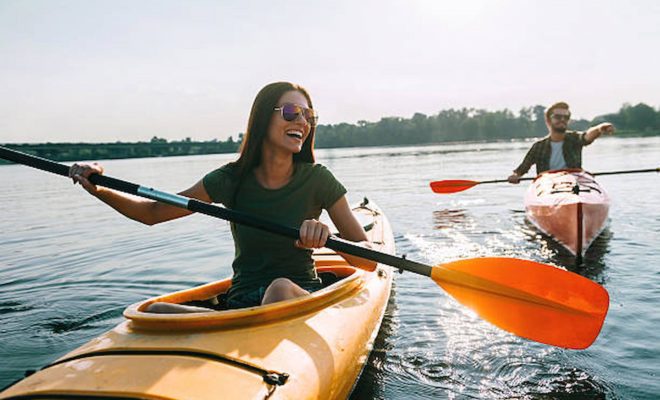Rules To Follow For Safe Kayaking

As with any type of water sports or activities, staying safe on the water should be your number one priority. Rivers, canals and coastal areas can be unpredictable, and combine this with the UK weather and you could find that a calm waterway could turn into a dangerous current before you know it.
As a result, it’s important to ensure you follow certain rules for safe kayaking at all times. Whether you’re getting out on a sit on top kayak or a sit in kayak, ensure that you familiarise yourself with the safety aspects before you take to the water.
At Cambridge Kayaks, our team are experts in ensuring the safety of our customers when they are enjoying their kayak, so in this latest blog post we’re exploring the top safety rules we suggest you stick to when kayaking on rivers, in the sea and on any other body of water.
Plan Your Route And Check The Weather
Ensure that you do your research in advance and only take a route on your kayak which you know you can tackle. Consider your abilities – if you are a beginner you need to ensure that you select a simple route which won’t take you too far away. Additionally, it’s important to check the weather for the full day before you set out. The weather can change in the blink of an eye and result in unfavourable kayaking conditions, so don’t set out on the water if you suspect the weather may get bad later on your trip.
Wear A Lifebelt
It should go without saying that you should wear a lifebelt, life jacket or flotation device whenever you are out on the water.
Ensure That Someone Knows Where You Are Kayaking And The Route You Are Taking
It’s important to let someone that you trust know that you are going out kayaking. Provide them with an outline of the route you intend to take, and let them know how long you expect to be out for. Additionally, ensure that you have some means of contact on you (for example your mobile phone). This way someone can keep track of your whereabouts and if you were to run into trouble, they could raise the alarm or you can call for help.
Wear Appropriate Clothing
If you were to capsize and fall in the water, you could be at risk of getting hyperthermia if you’re unable to get out and the temperature is cold. As a result, it’s important to wear layers of clothing which you can adjust to how hot or cold you get throughout your trip. Remember, you can always remove layers if you get too hot. It is worth investing in a wet or dry suit if you are paddling in cold water.
Know Your Kayak
Understand how your kayak operates and never overload your vessel – you could run the risk of capsizing the kayak if you go over the weight limit. You should always check your kayak and your equipment for wear and tear and any damage before you set out.














